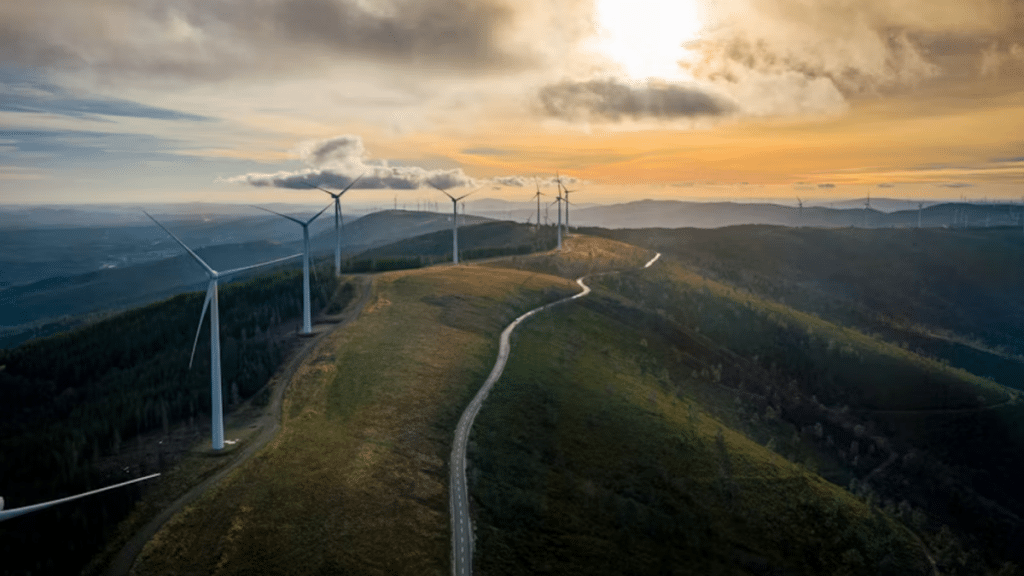Green energy is rapidly gaining traction as the world seeks sustainable and eco-friendly power solutions. These energy sources minimize environmental impact, reduce carbon footprints, and promote a healthier planet. This article explores various types of green energy and their benefits, guiding us toward a greener future.
1. Solar Power
Photovoltaic (PV) panels directly convert sunlight into electricity, whereas solar thermal systems utilize sunlight to heat fluids that then produce electricity. Solar energy is abundant, renewable, and emits no greenhouse gases, making it an exemplary source of green energy.
One of the main advantages of solar power is its infinite resource, as long as the sun shines. It also helps reduce electricity bills and has low maintenance costs. Environmentally, solar power is friendly with no emissions. However, it faces challenges such as high initial setup costs, weather-dependent efficiency, and the need for significant space for installation.
2. Wind Energy
Wind energy is particularly effective in areas with consistent and strong winds. Wind farms, both onshore and offshore, contribute significantly to the global energy mix.
Wind energy is clean and renewable, cost-effective after initial installation, and reduces dependence on fossil fuels. It is scalable from small to large installations. However, it requires specific geographical locations with adequate wind, can have visual and noise impacts on landscapes, and poses a potential threat to wildlife, particularly birds.
3. Hydropower
Hydropower, or hydroelectric power, generates electricity by harnessing the energy of flowing water. Dams and rivers are typically used to create a controlled flow of water that spins turbines, producing electricity. Hydropower is one of the oldest and most reliable green energy sources.
The benefits of hydropower include reliable and consistent power generation, flood control and water supply benefits, and a long lifespan of hydroelectric plants. It also has low operational costs. However, it comes with high initial costs and environmental impacts from dam construction, displacement of local communities and wildlife, and dependency on water availability, which can be affected by droughts.
4. Biomass Energy
Biomass energy can be used to produce electricity, heat, and biofuels. The difference between biogas and biomass lies in their source and production process. Biomass encompasses a wide range of organic materials, while biogas is specifically produced from the anaerobic digestion of organic matter, primarily agricultural and food waste.
Biomass energy utilizes waste materials, reducing landfill use and is carbon-neutral, as it releases the same amount of CO2 that plants absorb during their growth. It can be produced locally, supporting rural economies. However, it requires a steady supply of biomass materials, can lead to deforestation if not managed sustainably, and can emit pollutants if not properly controlled.
5. Geothermal Energy
Geothermal energy harnesses the heat from beneath the Earth’s surface to generate electricity and provide direct heating. Geothermal power plants are typically located in regions with high volcanic activity, where heat from the Earth’s core is more accessible.
Geothermal energy offers a reliable and constant energy supply, low emissions and environmental impact, and a small land footprint compared to other green energy sources. The challenges include being limited to regions with geothermal activity, high initial costs for drilling and plant construction, and the potential for geothermal fluids to contain harmful chemicals.
6. Ocean Energy
Ocean energy encompasses various technologies that harness the power of ocean waves, tides, and thermal gradients. Tidal energy, for example, utilizes the rise and fall of tides to generate electricity, while wave energy captures the energy from surface waves.
Ocean energy is a predictable and consistent energy source with vast potential, as oceans cover a significant portion of the Earth’s surface. It also has minimal visual impact compared to wind or solar farms. However, it faces high development and maintenance costs, environmental impacts on marine ecosystems, and technological challenges in harnessing and converting ocean energy efficiently.
7. Hydrogen Energy
Hydrogen energy harnesses hydrogen gas as a clean fuel source. In fuel cells, hydrogen reacts with oxygen to generate electricity, producing only water as a byproduct. This positions hydrogen as a promising solution for reducing carbon emissions across various sectors.
The benefits of hydrogen energy include zero emissions when used in fuel cells, high energy density, and versatile applications ranging from transportation to industrial processes. However, challenges include high production, storage, and transportation costs. Hydrogen production often requires significant energy, frequently sourced from fossil fuels, and the infrastructure for hydrogen fueling remains underdeveloped.
Conclusion
The future of energy lies in the diverse and innovative use of green energy sources. Each type of green energy presents unique advantages and challenges, but collectively, they offer a path to a sustainable and cleaner future. As technology advances and economies of scale improve these green energy sources will become more accessible and integral to our global energy landscape. Embracing green energy not only combats climate change but also ensures a healthier planet for future generations.
